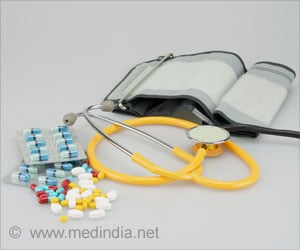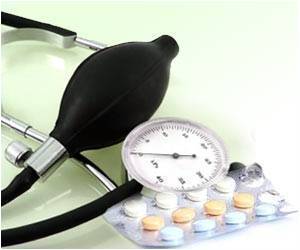A new study reveals that more than 1 million U.S. youngsters have undiagnosed high blood pressure, leaving them at risk of organ damage.
Hypertension is not necessarily a problem of adults, it looks like.A US study reveals that more than 1 million U.S. youngsters have undiagnosed high blood pressure, leaving them at risk of organ damage.
It says 1.5 million U.S. youngsters could suffer from have high blood pressure, three-quarters of whom may not even know they have the problem.The numbers are driven at least partly by rising rates of obesity, which is strongly linked with high blood pressure, said lead author Dr. David Kaelber of Case Western Reserve University in Cleveland and Harvard Medical School.
He also noted that calculating elevated blood pressure in children was trickier than in adults, and many doctors might not bother evaluating kids' numbers because they assumed hypertension was an adult problem.
Untreated high blood pressure can cause health problems in adults, including heart disease, strokes, artery damage and kidney disease, problems that usually take years to develop. Its effects in children are less certain, although there is some evidence that it might contribute to early artery and heart damage in young patients, according to the American Academy of Pediatrics.
"We can't wait until they've had a stroke to figure this is a problem," said Dr. Reginald Washington, a Denver pediatrician and member of the academy obesity task force, who was not involved in the research.
Washington said diagnosing high blood pressure in children is just the first step.
Advertisement
"To ignore it doesn't make any sense to me," Washington said.
Advertisement
The researchers analyzed medical records for 14,187 healthy children aged 3 to 18 who had at least three doctor checkups in northeast Ohio between June 1999 and last September. Kaelber said similar results likely would be found in other U.S. children.
Participants had blood pressure, height and weight measured at each visit. Using those variables, the researchers calculated that 507 study children had high blood pressure, or 3.6 percent, which is within estimates for the nationwide prevalence of high blood pressure in children. But only 131 of them, or 26 percent, had a documented high blood pressure diagnosis.
Extrapolating the results to the U.S. population suggests that 1.5 million children have undiagnosed high blood pressure, Kaelber said.
Kaelber said he decided to study the issue after working as medical director of a weight management clinic in Ohio. Many children referred there had high blood pressure but didn't know it.
"It was a very uncomfortable situation of telling parents, not only is your child overweight, but also your child has high blood pressure," he said. "They would get angry about this and say, 'How come other doctors I've been seeing have never told me about this?'"
In adults, readings higher than 140 over 90 are considered high blood pressure. The cutoff varies in children, depending on gender, age, weight and height. Children generally aren't considered to have high blood pressure unless they have elevated readings during at least three visits.
While American Academy of Pediatrics guidelines recommend measuring blood pressure at every doctor visit, some doctors may not take the next step to calculate if it's too high, especially if the child otherwise looks healthy, said Dr. Michael Wasserman, a pediatrician .
Source-Medindia
GPL/J











